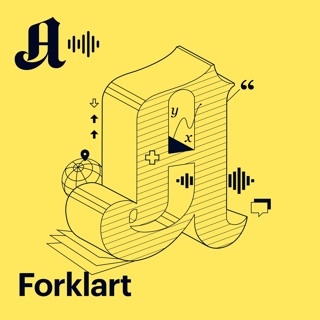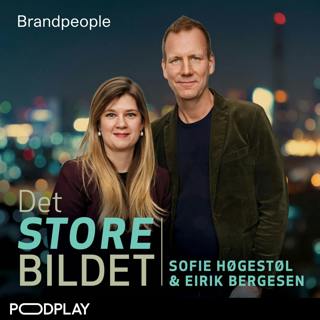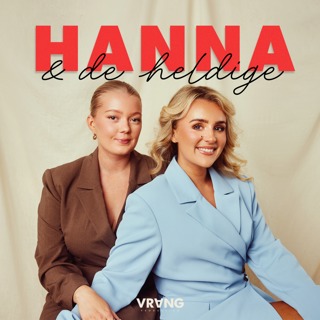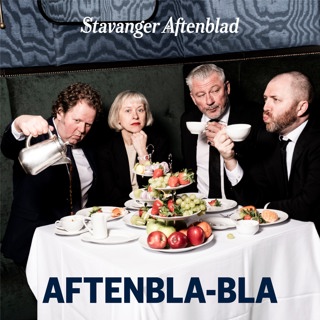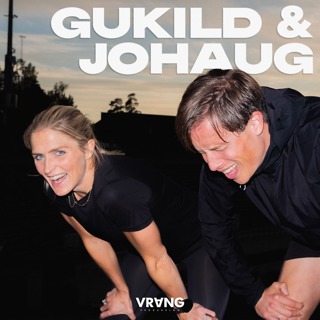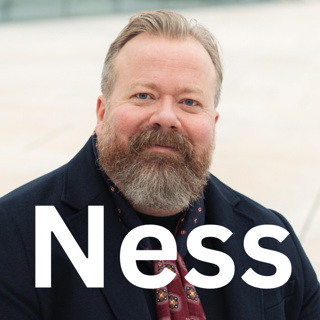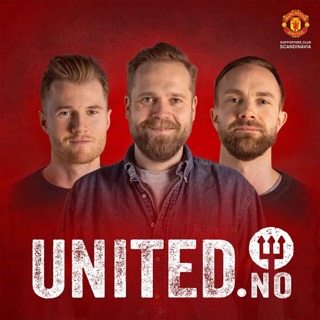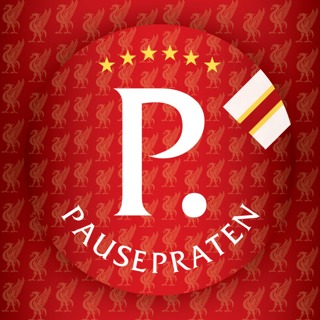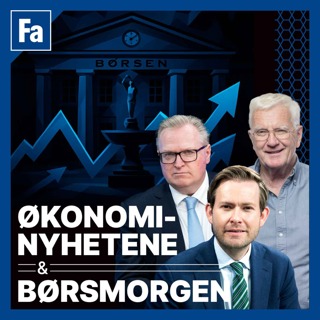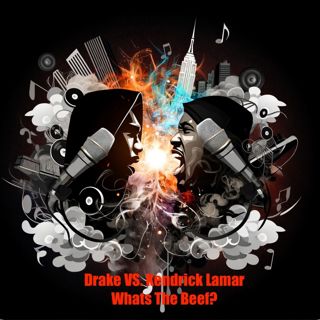
Lil Poppa and Dej Loaf's "Feel The Same When You're Sober" Taps Into Hip-Hop's Authenticity Debates
In the ever-evolving landscape of hip-hop, feuds and collaborations are staple elements that keep the genre dynamically engaging. A notable instance in this context revolves around the artists Lamar and Drake, whose complex relationship has captured significant media attention. While professional rivalries in the hip-hop industry often fuel creative outputs, it is essential to distinguish between entertainment-driven feuds and genuine personal disagreements.The track "Feel The Same When You're Sober" by Lil Poppa, featuring Dej Loaf, has gained attention not only for its content and artistry but also for its alleged ties to the Lamar and Drake discourse. This song taps into themes of authenticity, consistency, and introspection, which are frequently explored in hip-hop. It challenges listeners to consider whether their feelings and representations stay consistent regardless of circumstances, such as sobriety. Dej Loaf's contribution adds a complementary layer, intertwining a perspective that enhances the track's depth and appeal.The collaboration between Lil Poppa and Dej Loaf exemplifies how artists can yield impactful music that resonates with broader conversations within the industry. While not directly involved, the thematic elements of "Feel The Same When You're Sober" indirectly echo the publicized elements of the Lamar-Drake dynamic, where authenticity and artistic integrity are often at the forefront. This adds a layer of interpretative depth to the track, making it relevant not only to aficionados who follow the artists' careers but also to those who track the ongoing narratives and rivalries in hip-hop culture.Notably, this song and the circumstances around it are reflective of the broader industry trend where music often serves as a mirror to the artists' real-life dynamics. Through their music, artists like Lil Poppa and Dej Loaf continue to contribute to the vibrant dialogue within hip-hop, prompting listeners to critically engage with the content beyond its surface level. Whether it serves as a comment on industry feuds or as a standalone artistic statement, "Feel The Same When You're Sober" showcases the intricate ways hip-hop artists can weave personal truth into public artistry, offering a multidimensional experience that transcends traditional musical boundaries.This content was created in partnership and with the help of Artificial Intelligence AI
27 Aug 20242min

The Epic Rivalry Between Kendrick Lamar and Drake: Shaping the Future of Hip-Hop
Kendrick Lamar and Drake, two titans of the hip-hop industry, have long been subjects of comparison due to their unique styles and influential music. However, the rivalry reached a new height in 2024 when it transitioned from subtle jabs and lyrical subtleties to a more open and direct confrontation, often referred to as "beef" in the hip-hop community. This feud has captured the attention of fans worldwide, highlighting the competitive nature of rap culture.Kendrick Lamar, known for his deep lyrical complexity and ability to address significant socio-political themes within his music, contrasts with Drake's style, which often combines catchy hooks with emotional and interpersonal explorations. This stylistic difference has been one root of their competitive relationship, as each artist appeals to different aspects of the hip-hop spectrum.The origins of their rivalry can be traced back to various collaborations and interactions over the years, with each artist occasionally appearing to reference or respond to the other in their tracks. However, the rivalry was more implicit until 2024, when it became explicitly clear in their lyrics and public statements.In 2024, the feud became a centerpiece in the hip-hop community, driving discussions and debates among fans and critics alike. Both artists released tracks that directly addressed one another, showcasing not only their lyrical prowess but also their personal grievances and competitive spirits. These tracks often dissected each other's careers, achievements, and even personal lives, escalating the feud to one of the most talked-about clashes in contemporary music.Lamar's victory in this hip-hop feud was not just about outshining Drake musically but also resonated with his ability to maintain authenticity and artistic integrity, which many of his fans value highly. Lamar's approach in dealing with the feud—through sharp, insightful lyrics and maintaining his thematic depth—allowed him to emerge with a perceived upper hand.This rivalry, while highlighting competitive tension, also serves to push both artists creatively. It forces them to innovate and elevate their music to respond to one another, thereby contributing significantly to the evolution of the hip-hop genre. As of now, the effects of this feud extend beyond their music, influencing up-and-coming artists and the industry at large, emphasizing the dynamic and ever-evolving nature of hip-hop music.This content was created in partnership and with the help of Artificial Intelligence AI
25 Aug 20242min

"Rap Titans Drake and Kendrick Lamar's Feud Cools as they Focus on Artistic Growth"
The feud between Drake and Kendrick Lamar, two titans of the rap industry, has often been a topic of interest within the music community and among their fan bases. This rivalry, filled with subliminal disses and lyrical jabs, seemed poised to evolve into one of the most legendary in hip-hop history. However, as time has passed, what was once a heated exchange has cooled significantly, much to the disappointment of fans who thrive on the competitive spirit that such feuds bring to the music and culture.Drake, hailing from Toronto, Canada, and Kendrick Lamar, from Compton, USA, represent two distinct voices and styles within the rap genre. Drake is known for his emotive verses and blending of singing and rapping, creating a more melodious approach to hip-hop. Kendrick, on the other hand, is celebrated for his complex lyrical prowess and deep thematic content, often exploring social and political issues.The origins of their feud are somewhat nebulous, often traced back to subtleties and indirect mentions in their lyrics. It gathered momentum with Kendrick's verse on Big Sean's 2013 track "Control," where he called out several rappers, including Drake, proclaiming himself the "King of New York" and challenging his peers to step up their game. This verse set the hip-hop community ablaze, with many artists responding through their music or in interviews. Kendrick's aggressive assertion of dominance was a direct challenge to Drake's top-tier status in the rap hierarchy.Drake responded indirectly in various tracks and interviews, suggesting that competitive fires were stoked. Tracks like "The Language" from Drake’s album "Nothing Was the Same" are speculated to contain responses to Kendrick's call-out. However, Drake has often downplayed the rivalry in public statements, acknowledging Kendrick's talent but shrugging off any real animosity.Despite the voyeuristic thrill fans get from such rivalries, neither artist has escalated the feud to the excessive heights that some past hip-hop rivalries have reached. Instead, both artists seem to have focused on their personal growth and careers. Kendrick has delved deeper into complex, narrative-rich albums like "To Pimp a Butterfly" and "DAMN.," while Drake has dominated charts with his versatile hits across multiple albums.The cooling off of this feud, whether due to a mutual respect, a strategic pivot in their careers, or simply the passage of time, leaves many fans reminiscing about what could have been a historic rap battle. However, it also reflects the evolving nature of hip-hop, where direct confrontations may sometimes give way to subtler, more strategic forms of competition. The lack of a full-blown war between Drake and Kendrick Lamar serves as a reminder of their primary roles as artists committed to their crafts and messages, rather than getting mired in potentially destructive rivalries.While some fans feel robbed of a dramatic chapter in hip-hop history, it's clear that both artists have chosen paths that prioritize artistry and personal evolution over direct confrontation. This approach, while perhaps less sensational, may indeed contribute to the longevity and depth of their respective careers in an industry often marked by fleeting fame.This content was created in partnership and with the help of Artificial Intelligence AI
24 Aug 20243min

Captivating Clashes: Exploring the Intersection of Celebrity Feuds, Relationships, and the Public Fascination
In the dynamic world of celebrity culture, where music, movies, and personal lives often intertwine, few stories capture attention like that of a public feud between high-profile figures. An infamous example of this is the purported discord between musicians Kendrick Lamar and Drake, two heavyweight champions of the hip-hop world. Both artists have enjoyed immensely successful careers and have been pivotal in shaping contemporary rap music. However, they are occasionally rumored to be at odds with each other, potentially due to competition and differing views on the music and the industry.Though much of the feud remains speculative and based on interpretations of lyrics and interviews, fans and critics alike often analyze their songs for possible subliminal messages and shots at one another. For instance, Lamar's verse on Big Sean's 2013 track "Control" is frequently cited, where he calls out several rappers by name, including Drake, challenging their lyrical skills and claiming his dominance in the rap game. Drake has seemingly responded through various tracks and comments during interviews, highlighting a competitive but respectful rivalry. Both artists, at different times, have downplayed the feud, emphasizing mutual respect or dismissing the speculation outright.Adding another layer to the interplay of celebrity interactions, we find cross-overs into the personal lives and relationships of stars, which often attracts public and media scrutiny. An example here is Jennifer Lopez and Cris Judd, who made headlines when they appeared together at significant public events, such as the 74th Annual Academy Awards in 2002. Here, the intersection of film, music, and personal lives showcases how intertwined these aspects can be. Judd, a dancer and choreographer, and Lopez, a multifaceted entertainer, represented a fascinating coupling within the tapestry of Hollywood and its multifaceted narratives.Meanwhile, other celebrity relationships, like the one between Ashton Kutcher and Demi Moore, have similarly captured the public's fascination. Their relationship, notable in part for the age difference between them, highlighted themes of love, partnership, and the pressure of public scrutiny, further illustrating how the personal dimensions of well-known personalities are subject to the same kind of fervent speculation and discourse as their professional undertakings.In conclusion, while the essence of feuds like that between Lamar and Drake can underscore a deeper narrative about competition and respect in the music industry, it is the public's glimpse into these professional and personal realms that often keeps the audience engaged. As celebrities navigate their careers and personal lives, the public's continued interest underscores an enduring fascination with the interplay between the personal attributes and professional achievements of those in the limelight.This content was created in partnership and with the help of Artificial Intelligence AI
22 Aug 20243min

"Drake's Subtle Nod to Chingy's Hit Sparks Speculation in the Hip-Hop World"
In the world of hip-hop, feuds and rivalries between artists often capture the attention of fans, with the latest buzz surrounding Drake and a seemingly innocuous reference to Chingy’s 2003 hit song "One Call Away." This incident left fans speculating about Drake's true intentions—was he making a genuine appreciation or subtly throwing shade?Drake, known for his strategic lyrical choices and a knack for staying relevant in pop culture conversations, often uses references or name-drops in his music that leave listeners analyzing his words for deeper meaning. His mention of Chingy’s song, a nostalgic track from the early 2000s best known for its catchy hook and mainstream appeal, brings to light how Drake utilizes various elements from hip-hop history in potentially unexpected ways. While some may see this as a straightforward shout-out to a memorable song, others interpret it as a strategic move in the complex chess game of hip-hop rivalry, especially amid any existing tensions between Drake and his peers. Given Drake's history with using his tracks and social media to address his standing in the rap community, this mention might be packed with more than just nostalgia.On Chingy's end, such a nod from a contemporary giant like Drake could re-spark interest in his earlier work, demonstrating the enduring impact of past hits on today’s music scene. For the audience, it's an opportunity to revisit the early 2000s and reflect on how much the music landscape has evolved since then.As for the rivalry with Kendrick Lamar, it is unclear how mentioning Chingy might relate directly. Nonetheless, rap feuds often involve complex layers of communication, with artists sending messages through both overt calls and subtle hints in their music and public statements.In conclusion, Drake’s allusion to "One Call Away" opens up a space for various interpretations—whether it is a simple homage to a classic hit, a clever tactical maneuver in a broader feud, or merely an artistic choice meant to evoke a certain mood or response from the audience. This complexity is characteristic of Drake’s style, where lyrical intricacy meets cultural commentary, keeping his work endlessly fascinating to decode.This content was created in partnership and with the help of Artificial Intelligence AI
20 Aug 20242min

The Riveting Rivalry: Kendrick Lamar and Drake's Lyrical Showdown Captivates Hip-Hop Fans
The hip-hop community has witnessed its share of rivalries and feuds, with rappers using their sharp lyrical skills to tackle personal and professional grievances. One of the most intriguing indirect confrontations in recent years involves Kendrick Lamar and Drake, two titans of the music industry. The complexities of their relationship have sparked substantial discussions and analyses among fans and critics alike.Kendrick Lamar, hailing from Compton, California, and Drake, the Toronto native, have both carved out substantial legacies in their respective musical careers. Their feud has seen Kendrick releasing tracks that many interpret as digs at Drake. The tension between the two was palpable, feeding into the narrative of competitive rap culture where emcees test each other's skills and resolve through their music.One moment that famously highlighted the rift was Lamar's verse on Big Sean's track "Control" in 2013, where Kendrick named several rappers, Drake included, essentially throwing down the gauntlet and challenging them to step up their games. This was seen as a direct competitive push rather than a personal attack. However, it fueled speculation about their relationship.Drake's response to these challenges has been more measured. He has occasionally discussed the competitive nature of hip-hop in interviews, downplaying any serious animosity but acknowledging the rivalry. The Canadian artist seems to prefer addressing such conflicts subtly within his tracks and avoiding direct confrontations.An interesting twist to their story involves NBA superstar Stephen Curry, who reportedly reacted to Kendrick's supposed diss tracks aimed at Drake. Curry, a friend of Drake, found the situation worth a laugh rather than serious concern, indicating the interactions were all in good sport rather than actual hostility. This incident underlines how celebrity interactions in the entertainment and sports industries can intertwine, leading to media speculation and fan intrigue.The Kendrick Lamar-Drake narrative exemplifies how competition can be a driving force for creativity in the music industry. While the two artists might not see eye to eye in every regard, their indirect exchanges have undoubtedly contributed to some exhilarating moments in contemporary hip-hop. Their musical jousting pushes them to refine their craft, keeping their sharp lyrical and creative skills at the forefront of the genre. Despite the so-called beef, both Kendrick and Drake have maintained respect for each other's accomplishments and influence in music, aligning with the culture's broader ethos of competition mixed with respect.This content was created in partnership and with the help of Artificial Intelligence AI
18 Aug 20242min

Rap Titans Kendrick Lamar and Drake's Feud Captivates Hip-Hop Fans Worldwide
In the history of hip-hop, rap feuds have often captivated the attention of music fans worldwide, with some disputes becoming legendary for their intensity and lyrical sharpness. One of the most significant developments in recent times is the apparent feud between Kendrick Lamar and Drake, two titans of the modern rap industry. Kendrick Lamar, hailing from Compton, California, has been celebrated for his intricate lyricism and deep thematic content, tackling issues like social injustice, personal struggle, and community. Drake, from Toronto, Canada, has carved his niche as a genre-bending artist who merges hip-hop with R&B, and his tracks often dominate the charts with their catchy melodies and introspective lyrics.The roots of the feud can be traced back to subtle jabs and veiled references in their songs and interviews, suggesting a competitiveness or indirect confrontation. Observers and fans have often speculated about these lines being direct disses aimed at each other, analyzing lyrics for any shred of evidence of a beef. The peak of this feud seemed to escalate when Kendrick Lamar released what many saw as a direct diss track, widely regarded as one of the most overt and aggressive entries in the history of rap battles. The track showcased Kendrick’s sharp lyrical ability, as he crafted complex rhymes and flows that not only showcased his prowess as a wordsmith but also directly called out his perceived rival. The response to this track was explosive. Fans and fellow artists alike took to social media and other platforms to discuss and dissect the implications of this move by Lamar. Would this herald a new era of back-and-forth diss tracks, or would it prompt a more conciliatory approach towards resolving their differences?Historically, rap feuds have ranged from friendly competitive spirit to serious, deeper conflicts. The feud between Kendrick Lamar and Drake, however, invites an examination of the motivation behind such public displays of rivalry. Is it purely for the spectacle and increased media attention that boosts their profiles and music sales, or is there a genuine clash of artistic or personal values?In conclusion, the Kendrick Lamar and Drake feud remains a captivating chapter in the narrative of contemporary hip-hop. Whether it will lead to greater musical innovation or encourage a dialogue between differing artistic approaches remains to be seen. As the world watches and listens, the enduring impact of such feuds on the culture and music of hip-hop continues to be a subject of much interest and debate.This content was created in partnership and with the help of Artificial Intelligence AI
15 Aug 20242min

LeBron James' Crossover Connections: Exploring the Intersection of Sports and Music Stardom
The relationship dynamics in the entertainment and sports industries often cross paths, creating compelling narratives followed by millions worldwide. One such narrative involves LeBron James and his interactions with prominent figures in the music industry like Drake and Kendrick Lamar. LeBron, a globally recognized basketball icon for the LA Lakers, has cultivated relationships with several top artists, sharing mutual respect and admiration that transcends their professional realms.The convergence of these relationships was notably highlighted when LeBron was seen attending a Kendrick Lamar concert in Los Angeles. Kendrick Lamar, a Pulitzer Prize-winning artist known for his introspective lyrics and impact on hip-hop, commands a significant following, which includes fans like LeBron. The attendance of such a high-profile sports figure at Lamar's concert underscores the respect and support that artists and athletes often show each other, reflecting a broader culture of mutual recognition among celebrities in various fields.LeBron's relationship with Drake, another titan in the music industry, has also been a subject of media attention over the years. Drake, a Grammy Award-winning artist from Canada, is known not just for his musical talents but also for his affiliations with the sports world, particularly with the NBA and its athletes. His closeness with LeBron James illustrates a vibrant bond that merges the worlds of professional sports and global music culture.The involvement of LeBron in the cultural ventures of artists like Kendrick Lamar and Drake showcases the interconnectedness of elite sports and entertainment. This crossover appeal not only boosts the profiles of the individuals involved but also enriches fan experiences, providing a multidimensional view of celebrities who excel in their respective realms. Whether sitting courtside at an NBA game or attending concerts, these interactions highlight how sports and music icons both influence and celebrate each other's success, fostering a community that appreciates a wide range of talents across different platforms.This content was created in partnership and with the help of Artificial Intelligence AI
13 Aug 20242min





